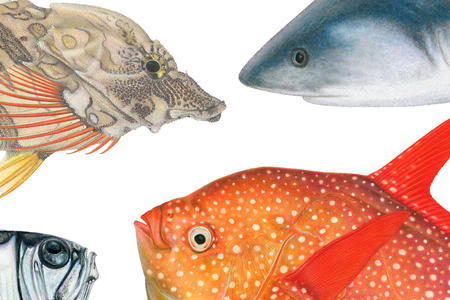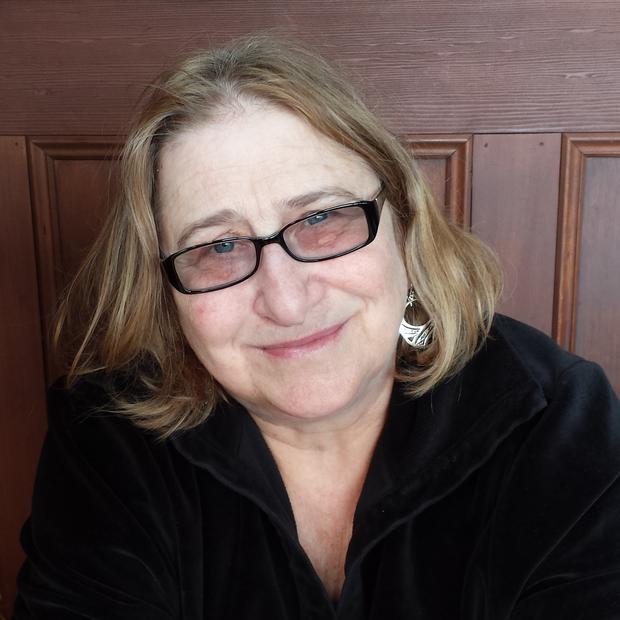Fourth of July naturalization ceremony
Say what you will about the current state of our nation, people all over the world still long to become Americans. For some 500 immigrants from more than 80 countries, the dream of America will come alive at Seattle Center’s 35th annual July 4 naturalization ceremony. Even hardened cynics turn mushy at this public event, where applicants often arrive in traditional dress from their native country, and the surrounding crowd holds “Welcome!” signs and whoops when each applicant’s country of origin is announced. For newly hatched citizens, the event represents years of residency (not to mention extensive paperwork), but more important, it authorizes their inclusion in our grand experiment in democracy. Before you fire up the barbecue or light the sparklers this year, consider stopping by this momentous occasion to remind yourself of the best parts of being American. –B.D.
If you go: Seattle Center naturalization ceremony, Fisher Pavilion, July 4, 11 a.m. (Free)

Prographica: Nine Years/Graceful Exit
When it was located in a small, brick, former storefront in Madrona, Prographica Gallery felt like a friend’s house — one where each time you dropped by, you noticed new and interesting art on the walls, art that reflected an eclectic but refined taste. In the past year, curator Norman Lundin moved the gallery to Pioneer Square, to a space he shared with KDR Gallery (Koplin Del Rio), alternating exhibits every other month. Then last month Lundin — an acclaimed art professor and painter himself, who’ll have a show at Greg Kucera Gallery in the fall — announced he’ll close Prographica entirely after a final show whose title says it all: Nine Years/Graceful Exit. Featuring many of the contemporary artists he has featured over the years, the group show includes vivid oil paintings, black-and-white photography, graphite drawings, dreamy watercolors, geometric illustrations and impressionistic still lifes. The works bounce off each other with surprising echoes, but ultimately the connection is Lundin himself. “My intention has been to exhibit the work of artists I especially admired and to help them achieve the critical and material success they deserved,” Lundin says in farewell. “While nine years is not long enough, it will have to do.” –B.D.
If you go: Prographica, July 5-27. Opening (and final) reception July 11. (Free)

Frida Fest
The region’s only festival dedicated to Frida Kahlo — iconic artist and unapologetic queer Mexican woman — takes place at the Burien Community Center, where more than 30 vendors will participate in a “Pop Up Mercado” in honor of the surrealist goddess. Organized by Colectiva Noroeste, a local group of Latinx food and craft vendors, the offerings will include tacos, tamales, empanadas and burritos (from Fiesta Foods), and crafts like those from Creative Mujeres, a Latinx art collective that sells handmade trinkets and paintings. Other activities celebrate Kahlo’s life, such as “Las Lunas: A Living Gallery Walk,” in which people dress up in the artist’s legendary style. A youth dance group, Las Joyas Mestizas, will perform traditional Mexican folk dancing, and a fashion show will feature the work of the Los Angeles-based designer Elvira Zamora. The festival will also have a Frida-themed gallery of paintings by more than 20 artists, including Jake Prendez, a rising Latinx artist whose vivid paintings depicting Chicanx life and culture. (If you can’t make it to Frida Fest, the group show of paintings will have a second life at Prendez’s Nepantla Cultural Arts Gallery in White Center through the end of the month.) –Agueda Pacheco Flores
If you go: Frida Fest, July 6, noon - 6 p.m. (Free)
Beatleconcert
For six years or so, a Liverpool rock band called The Quarrymen — you might know them by their later name, The Beatles — were road warriors who thrilled fans with live concerts all around Europe, the U.S. and beyond. But in 1966, the universally adored Fab Four had had it up to their mop-top foreheads with touring. They were burned out by the screaming of hysterical adolescent girls, the poor quality of the sound systems and the stress of being megastars in transit. So they retreated to the Abbey Road recording studio to make a string of classic, often innovative discs — ranging from the invigorating (Rubber Soul and Revolver) to the astonishing (Sargeant Pepper’s Lonely Hearts Club Band) to their 1969 swan song, Let It Be. But remarkably, the band never played any of those songs before a live audience. As a benefit for Strawberry Theater Workshop, Paul Hiraga of local band Downpilot leads a throng of talented local musicians in renditions of some of the iconic tunes that John, Paul, Ringo and George whipped up in the studio but never gave their day in the sun. Is singing along allowed? It should be. –M.B.
If you go: Strawberry Theatre Workshop at 12th Avenue Arts. Open rehearsal: July 5 at 8 p.m. ($12) Concert: July 6 at 8 p.m. ($18-$24) Reservations advised.

Trombone Shorty and Orleans Avenue
If you can’t get to New Orleans, but yearn for a strong taste of its musical flavors, a concert by Trombone Shorty and the Orleans Avenue band can be just the thing. Troy “Trombone Shorty” Andrews has been bringing the funk since he was 4 years old, and already has a legacy that includes jamming onstage with the great bluesman Bo Diddley. Now in his early 30s, he’s leading a brass band jazz revival in NOLA, spiced with his own musical seasoning of rock, soul and hip-hop. He turns every performance into a mini-Mardi Gras and parade, so expect to be on your feet and grooving. –M.B.
If you go: Neptune Theatre, July 6 at 8 p.m. ($39.50)
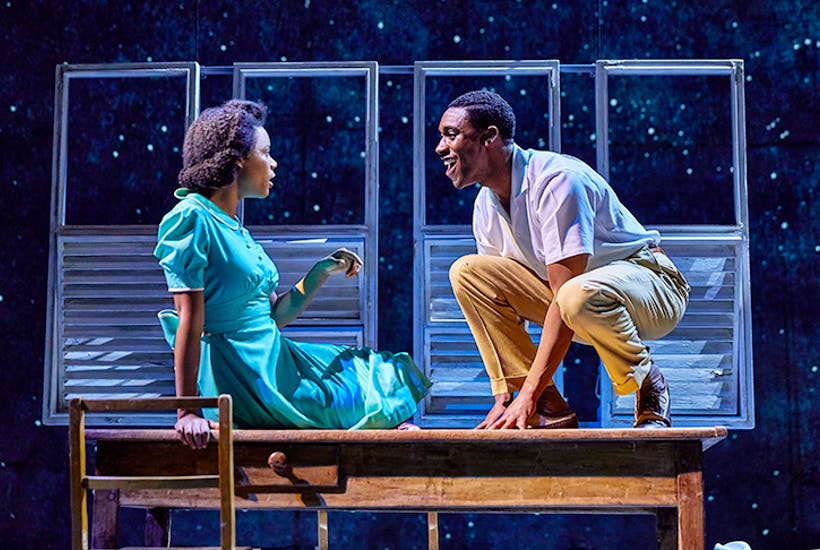
Small Island and Hamlet
London’s National Theatre is one of the most stellar theatrical purveyors in the world, and they’ve done us all a big favor by filming many of their recent stage productions live for export to movie theaters around the globe, including the U.S. This month, SIFF Cinema encores two memorable NT Live presentations. First up is Small Island, based on Andrea Levy’s absorbing, award-winning novel about a white Englishwoman and the three Jamaican immigrants her life becomes entwined with during World War II and its aftermath. The following week, SIFF offers another welcome screening: Shakespeare’s Hamlet, starring Benedict Cumberbatch as a marvelously brainy, fiery and conflicted Danish prince. –M.B.
If you go: SIFF Film Center at Seattle Center. Small Island: July 7-9; Hamlet: July 14-16. ($15/members, $20/general).
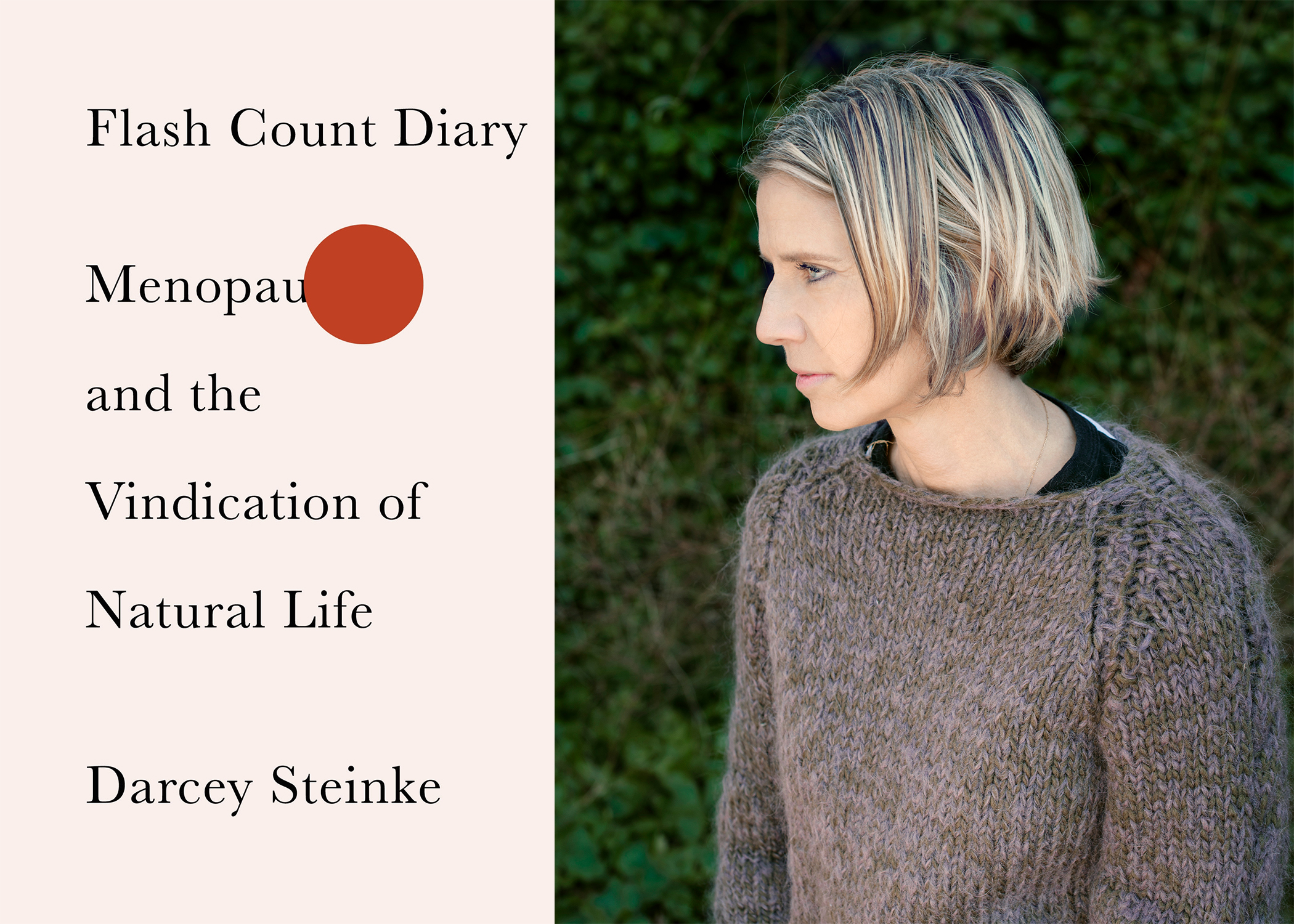
Darcey Steinke: Flash Count Diary
In her new book Flash Count Diary: Menopause and the Vindication of Natural Life, writer Darcey Steinke — while experiencing nightmarish hot flashes herself — surveys cultural attitudes toward menopause and older women. Spoiler alert: the news is not good! Menopause as a topic of discussion is still considered hush-hush and unseemly (or the butt of denigrating jokes), and older women are ignored as infertile (and, therefore, irrelevant) members of society. With an absence of affirming narratives about menopause, Steinke turned to one of the only other species that experiences menopause: killer whales. She journeys from New York City to the San Juan Islands in hopes of finding some solace in pods of orcas, which are led, fed and taught by postmenopausal whales. While she says it wasn’t a "Born Free" kind of connection (on the contrary, the whale she encountered seemed to her to be saying, “WTF are you doing?”) but it did give her a new perspective on this mysterious time of life — as a stage rife with potential and power. –B.D.
If you go: Town Hall Seattle, July 8 at 7:30 p.m. Steinke will be in conversation with University of Washington whale scientist Dr. Deborah Giles. ($5)
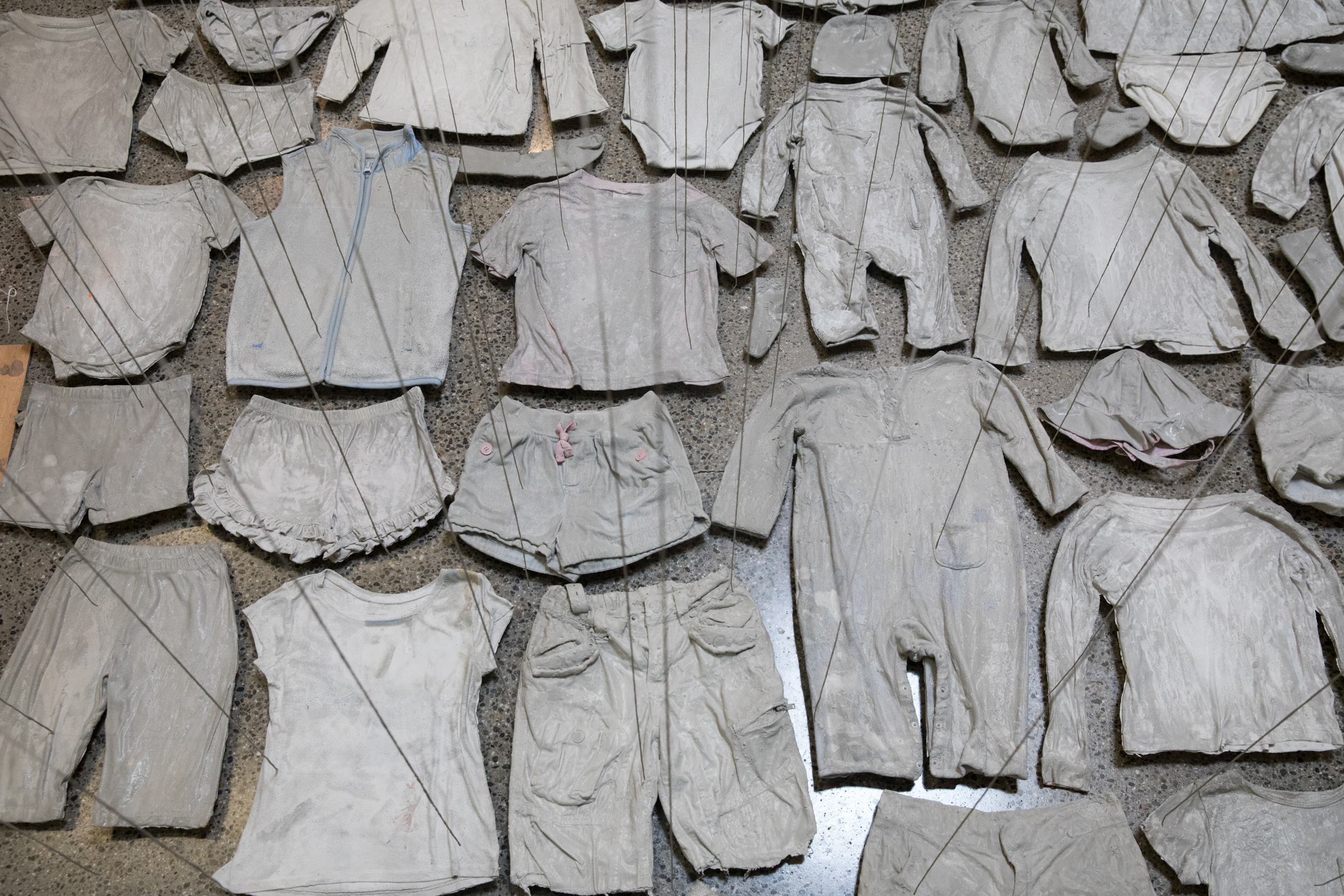
Beili Liu: Each and Every
The polished concrete floor at MadArt Studio in South Lake Union is covered by carefully laid out children’s clothing. But there’s something odd about the garments: they appear to be made of papier-mâché — all are light gray and seem to float just an inch or two off the ground. This startling installation is the work of Austin-based artist Beili Liu, who created Each and Every as a response to the immigration tragedy taking place at the U.S./Mexico border. After collecting donated children’s clothing, Liu began dipping each item in a solution of cement that causes the clothes to stiffen but retain their essential form. It also gives them a sense of weight that serves as a metaphor for the impact on so many young lives. Above the clothing, countless cotton threads hang like rain, or arrows that simultaneously direct our attention downward, toward the missing children, and upward, as if searching the sky for answers. Liu will perform several times during the installation, sewing ripped children’s clothes to make them whole again — a small domestic offering of a mother’s labor. –B.D.
If you go: MadArt Studio, open studio now through July 9. Artist performances: July 9 at 4 p.m., July 10 at noon and 4 p.m., July 11 at 5 p.m., with artist talk at 6 p.m. Exhibit runs through Aug. 31. (Free)
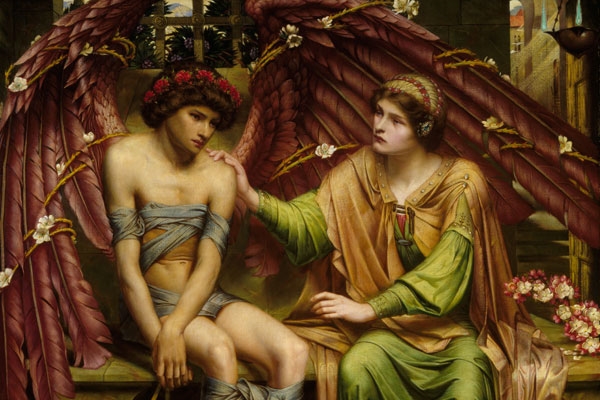
Victorian Radicals
In the late 1800s, Birmingham, England, was a center of art and innovation experiencing tremendous cultural change. Industrial advancements brought great prosperity to the city, but creatives were getting pushed out. Sound familiar? A group of young artists who called themselves Pre-Raphaelites decided to stage a rebellion. These Victorian Radicals (as SAM terms them) thumbed their noses at the rosy tones of old masters by using electric colors (made with newly available chemical pigments) and insisting on painting only things they could see (forcing friends to dress up in costumes and “hold still!” for long periods). They also attempted to convey social issues, painting scenes that included the poor, disabled or displaced, and yet couldn’t resist creating plenty of purely sentimental scenes as well. Critics at the time called the work “lamentable and revolting” and “monstrously perverse” but judge for yourself — keeping in mind the enormous leaps Picasso was taking by 1900 — and consider just what makes art radical. –B.D.
If you go: Seattle Art Museum through Sept. 8. ($20-$30)



